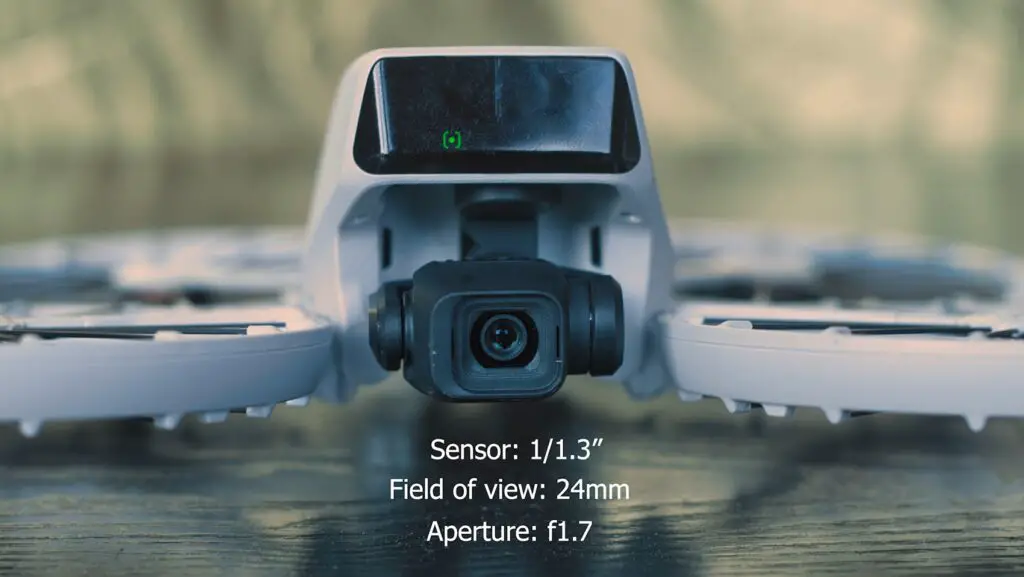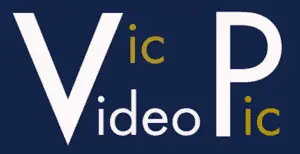Most reviews of the Flip focus on vlogging and close-distance autonomous tracking. However, this versatile drone can also be an affordable alternative to the Mini 4 Pro for photography and videography
I have already analyzed the outstanding photo quality. Here I will concentrate on video features and footage quality
Other related articles you might find interesting
- Flip photo quality
- Mini 4 Pro video quality
- Mini 3 and 3 Pro video quality
- Mini 4 Pro vs Mini 3 Pro for video
Here you can check the updated prices of the FLIP, Mini 4 Pro and Mini 3. These are affiliated links so I get a small commission in case of purchase
Video specs

The Flip has a 1/1.3” sensor with a field of view equal to 24mm and a wide aperture of f1.7
| Sensor size | 1/1.3″ |
| Field of view | Equivalent to 24mm |
| Aperture | f 1.7 |
The camera specs are the same as those of its two main contenders, the Mini 3, proposed at a similar price, and the more expensive Mini 4 Pro
When I compared the Mini 4 Pro to the Mini 3, I noticed increased detail and reach colors in the flagship model due to a new image processor and various improvements in the algorithm
The Flip’s footage specs are similar to those of the Mini 4 Pro but different from those of the Mini 3. Therefore, I assume that the Flip’s processing algorithm should be similar to that of the more expensive model:
- Both models have a frame rate of 60 fps at a resolution of 4k with a slow motion mode at 100 fps for super slow-mo, while the Mini 3 is limited to 30 fps
- They have a maximum bitrate of 150 Mbps versus 100 for the Mini 3
- Their highest ISO value is 6400 vs 3200
Other video features
The Flip can fly autonomously or with a smartphone or tablet but a controller is needed to get all the features available for videography
There are a few limitations compared to the Mini 4 Pro to justify the price difference
The Flip doesn’t have an omnidirectional obstacle avoidance system, there is only an infrared sensor to detect obstacles in front of the aircraft, so extra care is needed when shooting footage
Due to the bulky propeller guards, the Flip is less aerodynamic than the Mini 4 Pro and Mini 3. This translates into a lower horizontal speed, rated at 12 mps vs 16, while ascent and descend speeds are the same
This is limiting when tracking fast-moving targets. For landscape videography, I often switch to Sport mode with good results, however, in frontal medium winds the advancing speed is limited and I get better results by lowering the altitude
On my first flights with the Flip, I noticed occasional drifting in medium winds at a high altitude. After a firmware update, it looks more stable. Overall the wind resistance is slightly inferior to the other two models
The announced flight autonomy is 31 minutes, a more than acceptable value, although shorter than the 34 minutes of the Mini 4 Pro and 38 of the Mini 3. I only find it limiting when shooting hyperlapses, as the resulting movies will be slightly shorter
The transmission system is Ocusynch 4, the same as the Mini 4 Pro
In my tests, the Flip performs even better: this area has strong interferences due to several telecommunication aerials. There are also some buildings and trees between the controller and the aircraft. I never managed to fly this far with any other DJI prosumer drone
Signal transmission is the major weak point of the Mini 3, at least for users based in Europe.
The Flip offers the same intelligent flight modes as the Mini 4 Pro, except Waypoint, a powerful mode reserved for the flagship model. Active Track mode is not as powerful as the one of the Mini 4 Pro
Unlike the Mini 4 Pro and the Mini 3, the camera of the Flip cannot rotate to take footage in portrait mode. Vertical content can be automatically created by cropping the image to a resolution of 2.7k, which is acceptable for posting on social media
Normal mode
The Flip has two color modes. Let’s start with Normal, the one that can be used right out of the camera, I will analyze the 10-bit D Log M later on
Normal mode delivers HDR footage up to 60fps in 4k, like the Mini 4 Pro
In easy light conditions, the quality of the footage is outstanding with sensational detail and very rich colors even without any editing, a step up compared to the Mini 3. We are in the same league as the Mini 4 Pro, although the Flip has a touch of extra detail
Speaking of detail, some reviewers state that the footage of the Flip is a touch over sharpened. Let’s turn the camera down for top-down views to take the sky out of the scene and focus on detail and color rendition
In the Camera tab of the settings, there is a Style option to modify the Sharpness and Noise Reduction values applied to the footage. We can see the result obtained with different Sharpness values in this scene containing fine vegetation and architectural features
Let’s watch some higher dynamic range scenes. It was an overcast afternoon with strong light reflections in the heavy clouds
In this case, some editing is suggested to lift the shadows while avoiding burning the highlights. The resulting footage is well-balanced; however, in these conditions, D Log M yields better results
The latest DJI lightweight models have a very wide lens aperture delivering good results in low light
The Flip does not disappoint: the low-light performance is stunning and I did not need to drastically increase the ISO value. It is hard to believe that the footage was taken well after sunset. The Flip is not supplied with the Night Mode present in the Mini 4 Pro but it is not really needed
D Log M Color Profile
D Log M is a 10-bit color mode that can display over 1bn colors versus 16ml for the Normal 8-bit mode
It is a flat profile to preserve the information in the shadows without burning the highlight. A good dose of post-processing is needed. DJI is already supplying a specific LUT for the Flip which is a good starting point for color grading
For users who edit their footage D Log M has two main advantages over Normal mode:
- The quality of footage taken in the sun’s direction is slightly better
- Even more importantly, this color profile responds extremely well to color grading and makes it possible to adapt the footage to different moods or specific projects
The presence of this second color profile is another argument in favor of the Flip over the Mini 3 for users interested in videography
Summing Up
For users interested in an affordable drone for videography the Flip has a lot to offer compared to the Mini 3 if they don’t live in an area with strong winds
It delivers better footage, offers D Log M, hyperlapse mode, and super slow motion, has a much stronger signal transmission, at least in Europe, it is safer to use indoors, in confined spaces, and around people, due to the propeller guards
It is also a cheaper alternative to consider compared to the mighty Mini 4 Pro
One weak point to consider is the noise level, higher than the two models mentioned above, although much lower than the Neo
